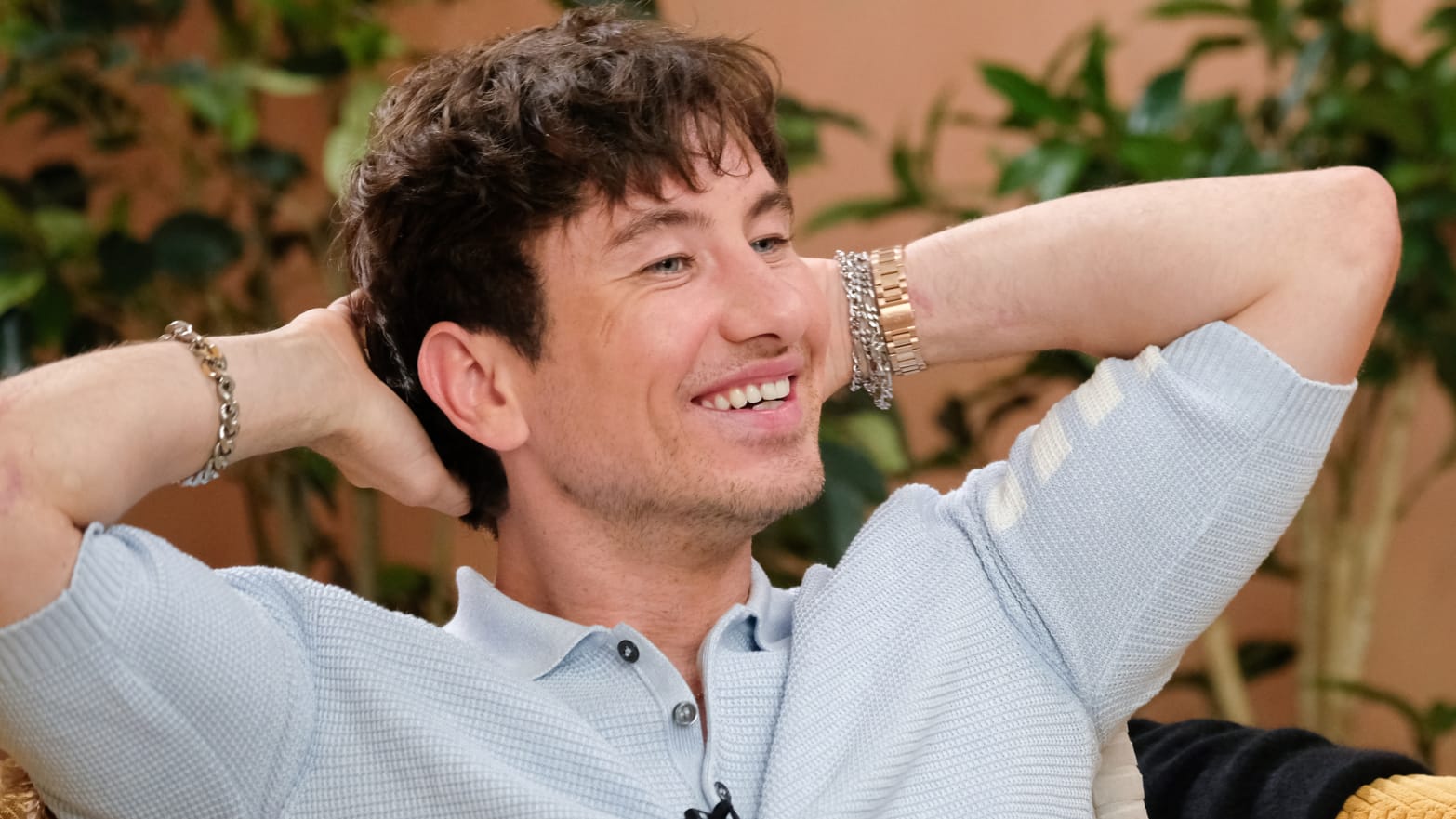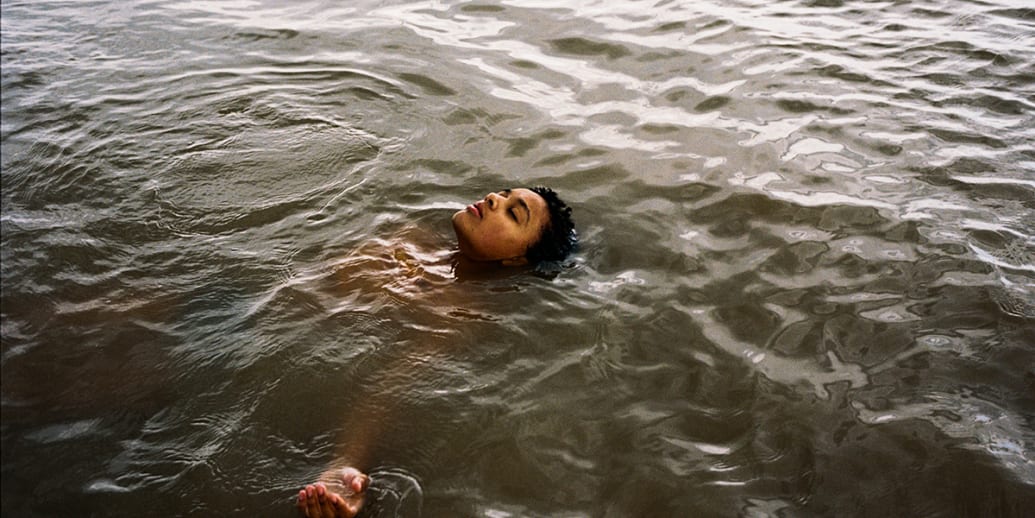Whether riding on a scooter while singing along to punk rock, line dancing to “Cotton Eye Joe,” or crooning Coldplay’s “Yellow,” Keoghan exudes an unruly magnetism in “Bird.”

Michelle Quance/Variety via Getty Image
TORONTO, Canada—Barry Keoghan is arguably the most electric actor working today, and he absolutely ignites Bird. As the ne’er-do-well single father of a 12-year-old, the Saltburn and The Banshees of Inisherin standout is a whirlwind of exuberant, volatile energy, his eyes as fiery as his body is covered in tattoos of beetles, spiders, and a giant centipede that stretches from around his neck to the side of his face—hence his name, Bug.
Whether riding through town on a scooter while singing along to punk rock, line dancing to “Cotton Eye Joe,” or crooning Coldplay’s “Yellow” with friends in order to make a toad excrete its hallucinogenic slime (yes, you read that correctly), Keoghan exudes an unruly magnetism that’s the stuff of movie superstardom.
One of his two standout projects at this year’s Toronto International Film Festival (alongside Bring Them Down), Bird—premiering at the fest on Sept. 7—is a showcase for the charismatic Keoghan. Nonetheless, he’s merely a supporting player in Andrea Arnold’s lyrical drama, the auteur’s first feature since 2016’s American Honey.
Set in a London council estate that recalls the setting of 2009’s Fish Tank, the writer/director’s latest is really about Bailey (newcomer Nykiya Adams), a girl on the precipice of major change whose life is upended by an encounter with a stranger named Bird (Passages’ Frank Rogowski) who claims to have once lived in a nearby apartment building. A story of abuse, escape, resilience, hope, heartache, and transformation, it’s another Arnold gem, not to mention an auspicious debut for its young lead.
On one of the many interconnected mesh walkways that connect her home to the surrounding coastal area, Bailey films birds flying overhead. For her fascination, a seagull lands in her path, walks toward her, and chirps an indecipherable (if friendly?) greeting. Before Bailey can react, her avian visitor flies away at the sound of Bug’s approach, and his cacophony continues as he spirits her back to their graffiti-covered residence, which they share with Bailey’s half-brother Hunter (Jason Buda).
Bug surprises Bailey with news that he’s getting hitched to his new girlfriend Kayleigh (Frankie Box), who has a toddler daughter of her own. This doesn’t go over well, and in the aftermath of a struggle in which Bug temporarily strangles her, Bailey opts to have Hunter’s girlfriend shear her wild locks—a decision that, throughout the rest of the film, earns her more disparaging comments than compliments.
Bailey engages with the world through her phone’s camera, whose videos she projects on her bedroom wall. In that regard, she feels like a kindred spirit to Arnold, a filmmaker whose cinematographic gaze—marked by rugged, bouncy handheld visuals that are affixed to her protagonist, as well as sly associative edits that reflect her headspace—seeks to both understand and commune with her working-class environs.

A photo still from Bird
Courtesy of TIFF
Whether watching two blonde girls as they pass her by, or stalking Hunter as he and his mates embark on a clandestine outing that she’s forbidden from joining, Bailey searches for herself (and stability, and happiness) by following others at the outset of Bird. When Hunter’s excursion concludes with police sirens, though, she flees to a nearby field, where she falls asleep by herself in the tall grass.
In the morning, Bailey awakens to discover that she’s been joined by a slightly disheveled man in a sweater and skirt who calls himself Bird, twirls for Bailey’s iPhone, and marvels at the “beautiful” day. Bailey trails Bird to the building adjacent to her bedroom window, where he perches himself on the roof like the gray skies’ numerous fluttering fowls. With a kind smile that marks him as not only a non-threat but, somehow, a natural friend and protector, Bird explains that he’s looking for the family he never knew, and which he believes lived in this place. Rogowski inhabits the man as a lost soul who may also be inhuman, and Arnold pulls off a similar balancing act, hinting at the fantastical while never sacrificing the hard edge of her portrait of this downtrodden milieu.
Nimbly interjecting magic realism into its vérité drama, Bird faintly recalls Jim Sheridan’s In America, and Arnold’s film is similarly infused with joy and misery, triumph and tragedy. On the same morning that she hears Hunter discussing his partner’s unexpected pregnancy—which threatens to make him a dad at 14, the same age that Bug had him—Bailey has her first period. Transitioning into womanhood proves perilous for the girl, especially once she visits her mother’s (Sarah Beth Harber) residence and finds that everyone (including her adolescent half-siblings) in living in fear of Skate (James Nelson-Joyce), her mom’s new beau.
As her dad’s wedding day approaches and Bailey continues to bristle at being a bridesmaid, Arnold provides regular doses of terror and humor, the latter primarily coming from Keoghan’s Bug, who can’t stop himself from bursting into song, including with the narcotics-producing toads he believes will finance his nuptials.
Arnold so frequently dramatizes Bird in stark, rugged terms that it’s a surprise whenever she suddenly cuts away from the action proper to quick flashes of the past—a reflection of Bailey’s mind that further attunes the material to her subjective perspective. The film’s sudden, graceful poeticism is almost as jolting as its violence, and equally as affecting, and that becomes even truer as Bailey, following a trip to the beach with Bird and her little brothers and sister, chooses to lead as much as she follows.
At a certain point, Arnold stops being subtle about Bird’s true nature, but in the director’s assured hands, that out-of-this-world revelation comes across as a natural outgrowth of Bailey’s desire for evolution, strength, nurturing, and flight.
Throughout, Rogowski and Adams’ rapport—predicated on silent shared glances and the unspoken understandings they convey—provides Bird with its moving emotional foundation. Keoghan, meanwhile, lends it an irresistible vivacity that peaks with a post-wedding party and, later, a scooter ride through the town with Bailey and Hunter which underlines that growing up isn’t something that’s done alone; rather, at its best, it’s a collective process accomplished with those we love.




